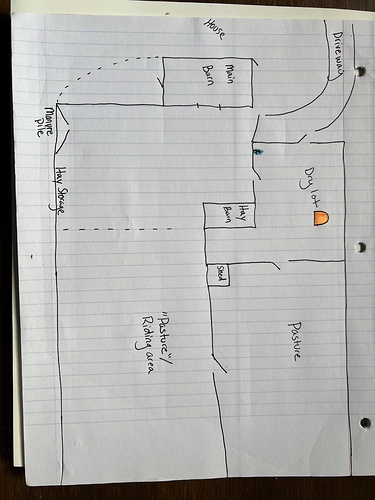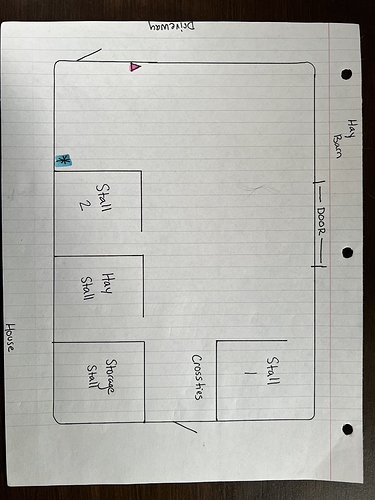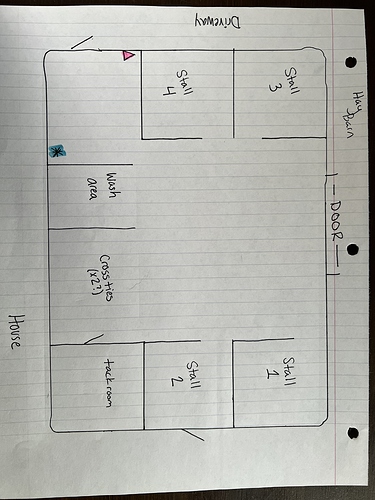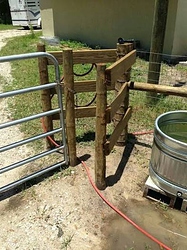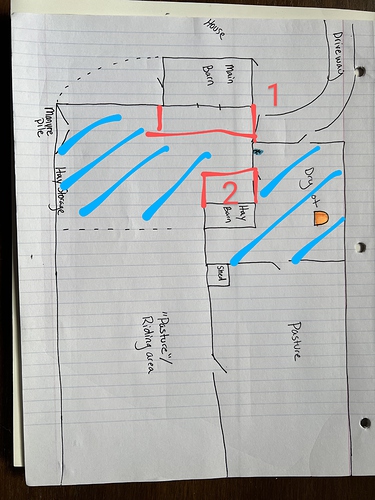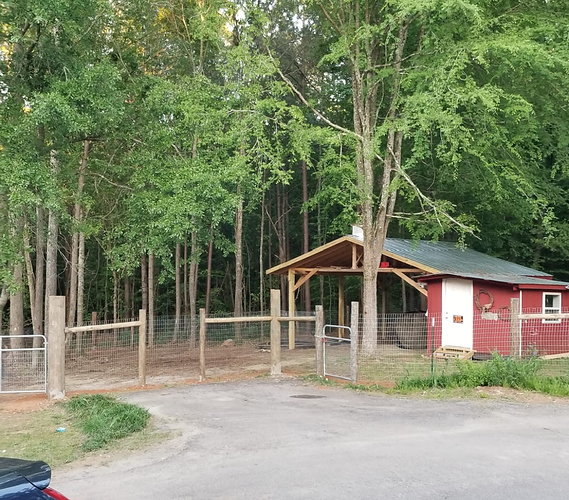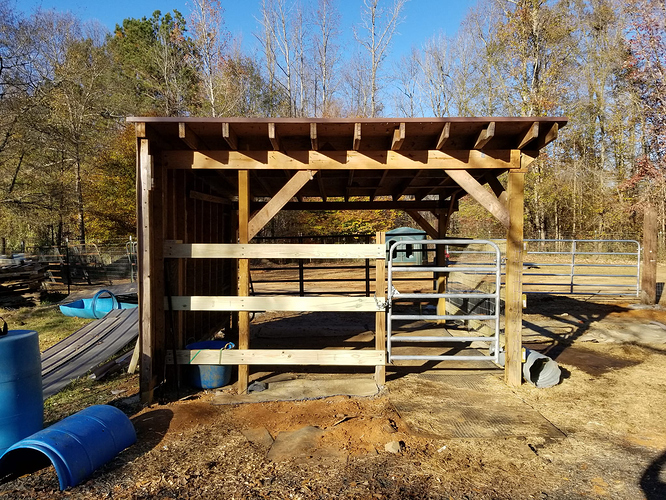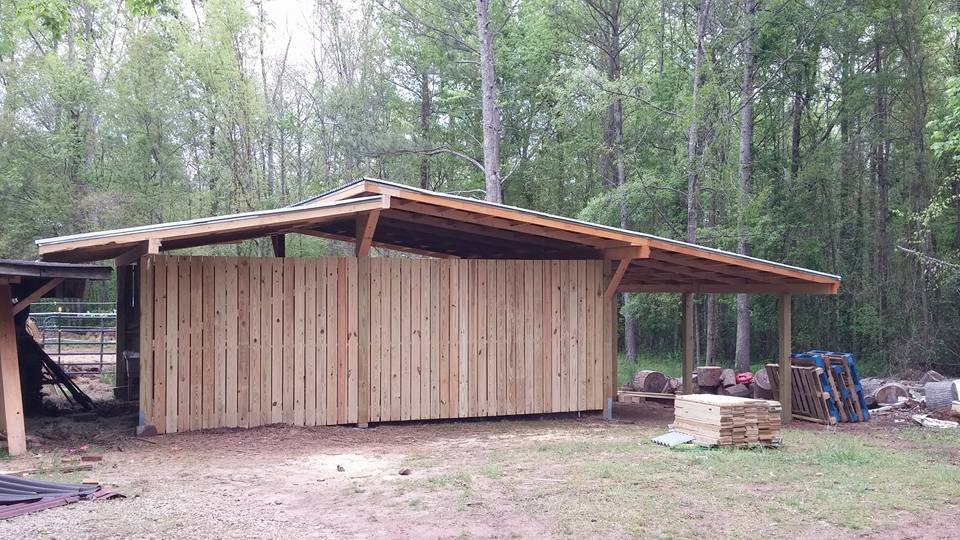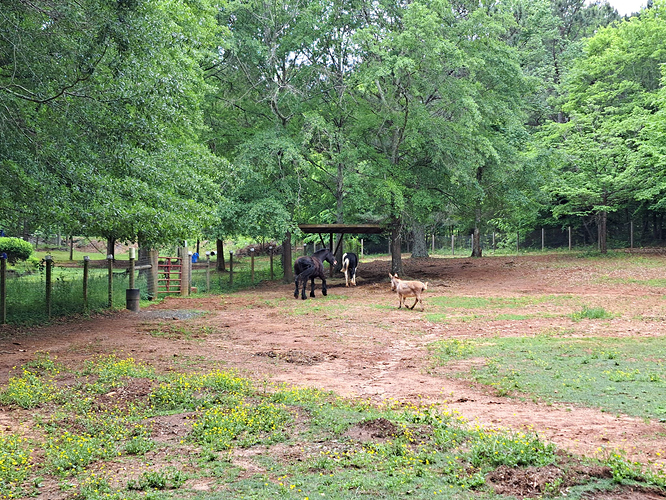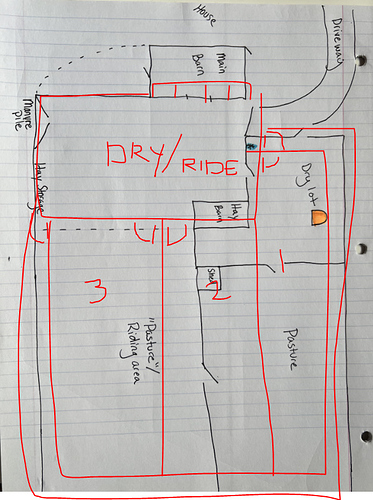Needing to redesign the setup of the barn and potentially the paddock(s)/ pasture(s) to maximize efficiency and make the facility more suitable for my needs. There is a LOT of work I’d like to do but I’m on a tight budget so efficiency is the name of the game with both everyday tasks (time) and up front costs. I’m only looking to have 2-3 horses (I think 4+ would be more than I can handle chore wise and more than the land can handle without significant investment).
This is the general layout of the horse area. There is a lake all the way to the right and additional acreage with the lake but that acreage is not cleared at all and will need the most work. The area depicted is ~ 4 acres total. The two hash lines are where the land drops off/ goes downhill. The blue asterisk is the water hydrant.
This is the current set up inside the main barn. Blue = water, red = electric panel. We have a total of 5 12x12 Priefert panel stalls. The barn is not quite 3 stalls wide.
This was my original proposed barn layout.
Must haves: Wash area (will not have hot water), enclosed tack storage - currently everything gets dirty from sitting out in the barn, shared water set ups - would like to invest in 1-2 auto waterers that can serve a variety of areas, riding area, grooming space inside with good lighting and room to maneuver for vet and farrier, round bale storage that isn’t a tarp.
Small squares and bulk sawdust can be stored in the hay barn. The shed is not usable (needs torn down). Our tractor can fit inside the barn so could potentially store rounds on the side of stalls 3 & 4. Originally I wanted to add runs behind stalls 1 & 2 with a track that would run down the long side (where manure pile and hay storage are now) and somehow loop over to the dry lot side but it seems impossible. The tractor has to be able to drive from driveway around hay barn down to the lake for maintenance reasons. There is no shelter outside for the horses which is the only reason we really need stalls. If I could get them a sided shelter in the paddock and add fans, I think the stalls would become a mostly moot point. The horses live mostly in the dry lot with a round bale under a hay hut. The terrain is incredibly hilly. The only flat space is between the 2 barns and between the paddock and manure pile. I was thinking about grading and putting limestone in that whole area making it an all weather dry lot I can also ride on but I’m worried about it holding up to traffic (vet + farrier park in that area, shavings and hay are delivered there, it’s the only place to turn a trailer around). The riding area / “pasture” is one long hill but is the largest cleared area I have. Fine to ride on but very challenging for greenies and it does get and stay wet due to being lower than the rest of the property.

